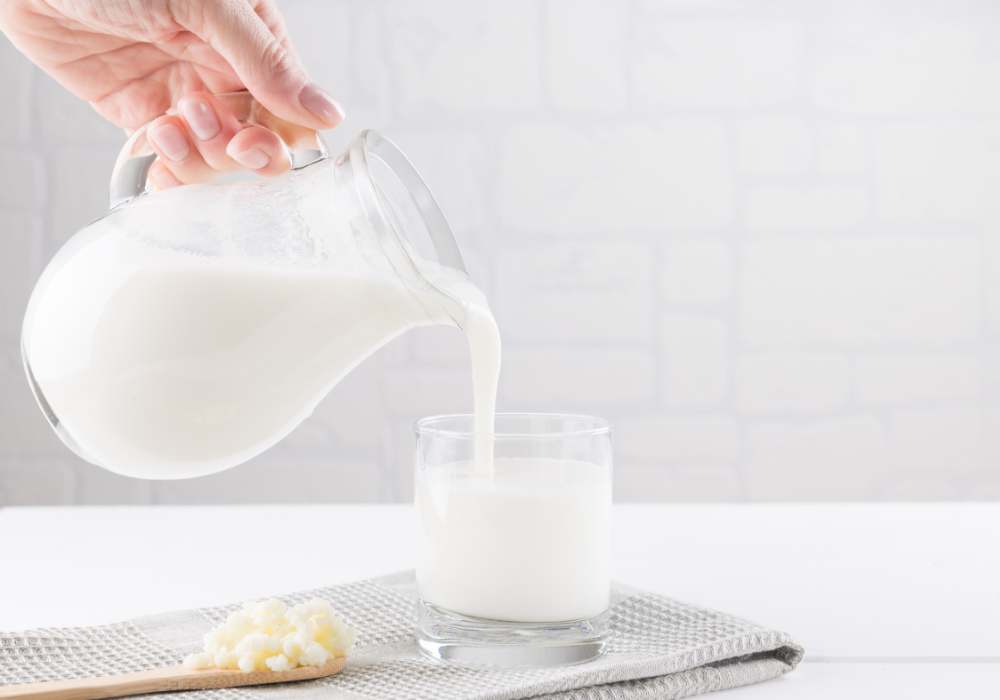During fermentain, tempurature plays an essential role. Kefir grains is a combination of lots of bacteria and yeast, and their vital food is lactose in milk.
Various bacteria preser different temperature.
For instance, Kefir grains prefer temperature between 20 to 30°C. They work and ferment the best in this environment, slowly transform lactose to lactic acid. Eventually forms the thickest texture and strong kefir flavour. On contrary, fermentation slows down in lower temperature. And when temperature raises over 40°C, grains will be damaged.

The ratio of milk to kefir grains is another important factor to consider when making kefir. The ideal ratio will depend on a variety of factors, including the type of milk being used, the desired thickness of the final product, and the ambient temperature. Here are a few examples of milk to kefir grain ratios that can be used at different temperatures:
Cold temperatures (below 20°C): In cold temperatures, it may be necessary to use a higher ratio of kefir grains to milk in order to achieve sufficient fermentation. A ratio of 1:10 (kefir grains:milk) may be appropriate in these conditions.
Room temperature (20-30°C): At room temperature, a ratio of 1:20 (kefir grains:milk) is generally recommended. This will produce a thicker, creamier kefir with a slightly tangy flavor.
Warm temperatures (above 30°C): In warm temperatures, it may be necessary to use a lower ratio of kefir grains to milk in order to prevent the kefir from becoming too sour. A ratio of 1:30 (kefir grains:milk) may be appropriate in these conditions.
It’s important to note that these are just rough guidelines, and the exact ratio of milk to kefir grains will depend on personal preference and the specific characteristics of the milk and kefir grains being used. It may be necessary to experiment with different ratios in order to find the perfect balance for your taste and temperature conditions.

Temperature also plays a role in the shelf life of kefir. Microorganisms continue to grow and ferment even after the kefir is made, and this can lead to changes in the flavor and texture of the final product over time. If the kefir is stored at too warm of a temperature, the fermentation process may accelerate, causing the kefir to become too sour or even spoil. On the other hand, if the kefir is stored at too cold of a temperature, the fermentation process will slow down, and the kefir may not develop its full flavor potential.
In conclusion, temperature is a very important variable in making kefir. It plays a role in the rate of fermentation, the types of microorganisms present in the final product, and the shelf life of the kefir. By carefully controlling the temperature during the fermentation process, it is possible to produce kefir with the desired flavor and texture.










